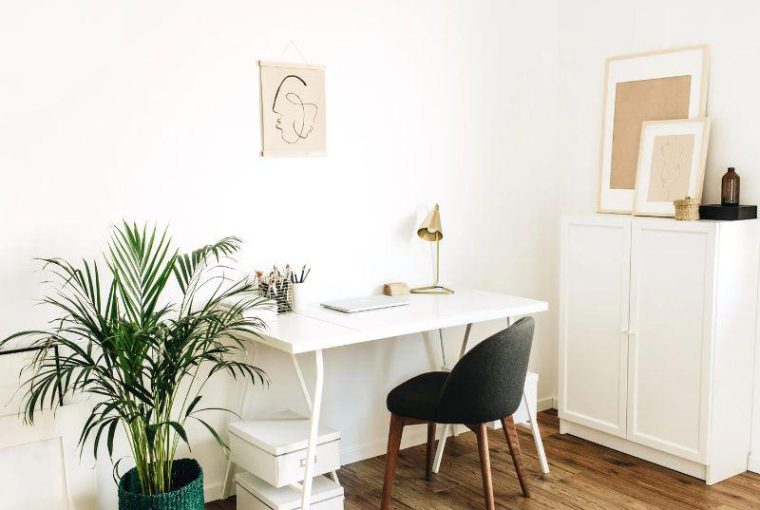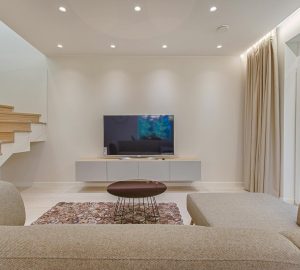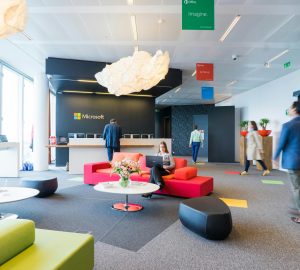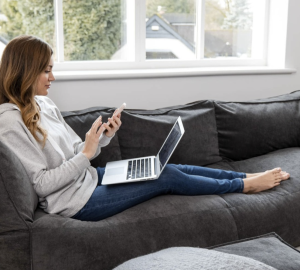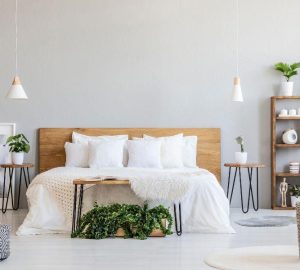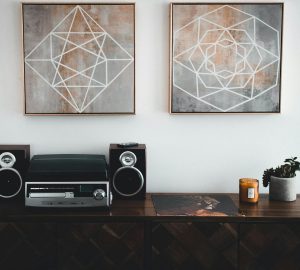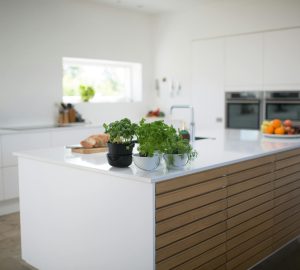Creating a home office that inspires and motivates you starts with understanding the importance of design and functionality.
A well-organised and visually appealing workspace can significantly boost productivity by reducing distractions and increasing focus. Choosing the right furniture, lighting, and decor that reflect personal tastes and preferences makes the workspace not only functional but also enjoyable to use.
Incorporating elements that inspire creativity is essential. Artwork, plants, and personal mementoes can transform an ordinary home office into a space that sparks innovation. It’s crucial to have a setup that balances comfort with efficiency, ensuring that the office is a place where you can work for long periods without feeling fatigued.
Maximising natural light and maintaining a clutter-free environment are key aspects of a motivating home office. Natural light not only enhances mood but also positively impacts productivity, making it easier to stay motivated throughout the day. By carefully considering these elements, anyone can create a home office that is both inspiring and conducive to getting work done effectively.
Selecting the Ideal Location
Choosing the right spot for your home office involves evaluating the amount of natural light available and ensuring that the area is free from distractions. Understanding these elements helps in creating a motivating and productive environment.
Assessing Natural Light and Surroundings
Natural light plays a crucial role in setting up an inspiring workspace. Rooms with large windows are preferable, allowing maximum natural sunlight to enter. This not only reduces eye strain but also boosts mood and productivity.
The position of the windows relative to your desk is also important. Ideally, your desk should be positioned perpendicular to the windows to avoid glare on your screens. If your home lacks sufficient natural light, use full-spectrum lamps that mimic daylight to create a more inviting atmosphere.
Consider the view from your workspace as well. A pleasant view of a garden or an open space can provide a refreshing break from work and help reduce stress levels. Adding plants to your workspace can also improve air quality and overall well-being.
Considering Distractions and Workflow
Identifying and reducing potential distractions is key to maintaining focus while working from home. Select a location that is away from high-traffic areas in your house to minimise interruptions from family members or housemates.
Soundproofing can be beneficial if noise is an issue. Simple solutions include using noise-cancelling headphones, adding rugs, or installing acoustic panels. For a more permanent solution, consider soundproofing your windows.
Also, think about the proximity to other activities or rooms. Being too close to the kitchen or living room can tempt you to take unnecessary breaks. A workspace that is separate from leisure areas helps to maintain a clear distinction between work and relaxation.
In terms of workflow, ensure easy access to all necessary tools and documents. The location should allow for a smooth flow of work, enabling you to organise your materials efficiently. This arrangement fosters a more seamless and productive work environment.
Designing Your Space
Creating a home office that inspires and motivates involves selecting a functional desk and comfortable office chair, optimising lighting and colour scheme, and incorporating personal touches and artwork. Each element is crucial for a workspace that boosts productivity and comfort.
Choosing a Functional Desk and Comfortable Chair
Selecting the right office desk and chair is paramount for comfort and efficiency. An adjustable desk, such as one with height settings, can accommodate various working positions, reducing strain over time. The desk should have enough surface area for devices and materials without clutter.
Comfort in an office chair is critical. An ergonomic chair with lumbar support and adjustable settings helps maintain posture and reduces the risk of back pain. Fabric or mesh materials can offer comfort and breathability. Considering swivel and wheeled options ensures easy movement around the workspace.
Optimising Your Colour Scheme
In addition to choosing the right colours, it’s essential to consider how natural and artificial lighting will affect your chosen palette. Natural light can enhance the vibrancy of your colours, making the space feel more alive and inviting. On the other hand, if your home office has limited natural light, using lighter shades can help brighten the room, creating a more open and airy feel.
Another key element is the psychological impact of colours. For instance, incorporating shades of blue can help reduce stress and lower heart rates, creating a tranquil work environment. Meanwhile, small doses of red or orange can stimulate creativity and enthusiasm without becoming overwhelming. By thoughtfully combining colours that complement each other, you can create a harmonious workspace that both inspires and motivates you.
Incorporating Personal Touches and Artwork
Personalising the home office makes it inviting and uniquely yours. Artwork, whether paintings, photographs, or prints, can inspire creativity and provide visual interest. Shelves with books, plants, or decorative items add character and warmth.
Incorporate items like a family photo or a favourite piece of art to make the space feel more personal. Adding a few accent pieces such as a stylish lamp or decorative throw cushions can further enhance the comfort and style of the environment.
Enhancing Productivity and Creativity
Creating an inspiring home office involves prioritising both productivity and creativity. This can be achieved through incorporating smart storage solutions, decluttering and organising supplies, and selecting the right technology and accessories.
Smart Storage Solutions
An effective home office requires smart storage solutions. Utilising vertical space with shelves or cabinets maximises room without causing clutter. A filing cabinet is essential for keeping important documents organised and easily accessible.
Investing in multi-functional storage furniture, such as desks with built-in drawers, helps maintain a neat workspace. Introducing a minimalist home office aesthetic is also beneficial, as it reduces distractions and promotes focus. Cable management tools ensure cords are neatly arranged, preventing a messy appearance. Smart storage fosters a productive and serene workspace.
Decluttering and Organising Supplies
Keeping a home office clutter-free is vital for maintaining a clear mind. Regularly sorting through office supplies and removing unused items helps prevent unnecessary clutter. Utilising labelled containers for pens, papers, and other small items ensures everything has a designated place. A planner can assist with staying on top of tasks and deadlines.
Incorporating personal touches, like a scented candle, can make the space more inviting without adding to the clutter. A combination of open and closed storage allows for both the display of personal items and hiding away less attractive supplies. Decluttering not only enhances the physical appearance of the space but also improves mental clarity and creativity.
Selecting Technology and Accessories
Choosing the right technology and accessories is crucial for a functional home office. An ergonomic chair supports good posture, reducing physical strain during long working hours. Opting for a reliable printer and additional monitors can streamline workflow and boost productivity.
High-speed internet, an efficient computer, and noise-cancelling headphones contribute to a more efficient work environment. Investing in technology that aligns with one’s work needs is essential. Additionally, accessories such as task lighting and document stands can significantly enhance both productivity and creativity by providing comfort and functionality in the workspace.
Setting Up for Success
Creating a home office that motivates you involves more than just setting up a desk and chair. It’s about designing a space that encourages productivity and comfort through thoughtful organisation and decor choices.
Instituting a Routine and Setting Reminders
Establishing a consistent routine helps maintain productivity. Using tools like calendars and task lists can keep track of daily goals. Setting digital reminders on devices means important tasks are not forgotten. Writing notes on a whiteboard or sticky notes can provide visual cues throughout the day.
Incorporating motivational quotes through posters or small desk accessories can also uplift the mood. Position these items where they are frequently visible. Routines and reminders ensure the workday starts with a clear plan and objectives.
Creating an Atmosphere with Plants and Decor
Decorating the workspace with personal touches and greenery can greatly improve the work environment. Houseplants, such as succulents or ferns, not only add a touch of nature but also improve air quality. This can make the home office feel more inviting and cosy.
Adding decor that reflects one’s personality, such as favourite books on shelves or a rug, can make the space feel comfortable. Layered lighting, which includes ambient and task lighting, helps reduce eye strain. Using vertical space efficiently with shelves can keep the desk clutter-free and organised.
Incorporating Ergonomics for Sustained Comfort
Ergonomics is crucial for long-term comfort and health. Investing in a good-quality chair with adjustable features can minimise back pain. The desk height should allow for a natural arm position when typing. Accessories like wrist rests or footrests can further support ergonomics.
Using an adjustable monitor stand promotes better posture. Ensuring that the outlets and cables are well managed prevents a tangled mess. An ergonomic setup leads to better focus and reduces the physical strain from extended periods of work.
